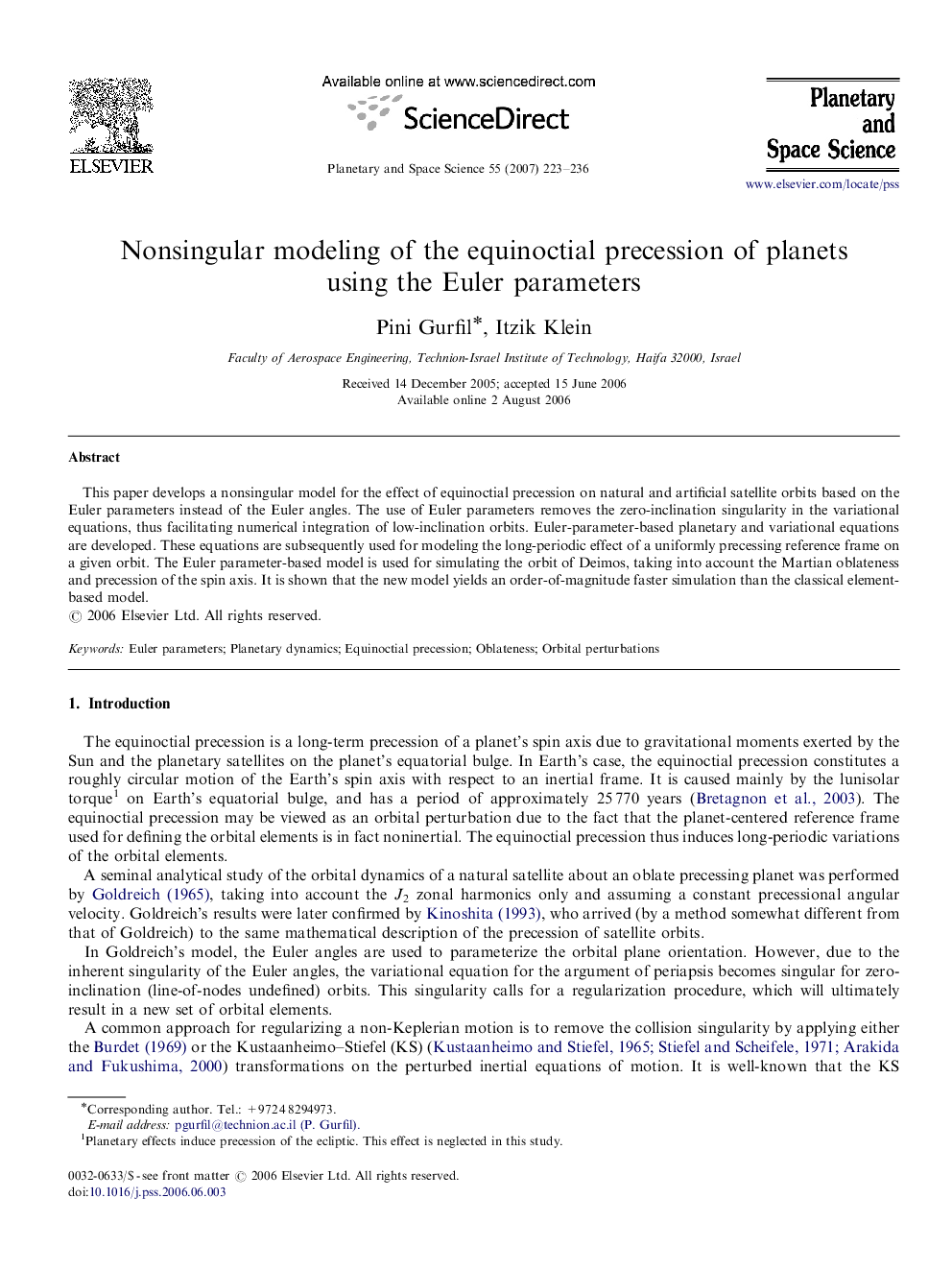| Article ID | Journal | Published Year | Pages | File Type |
|---|---|---|---|---|
| 1782323 | Planetary and Space Science | 2007 | 14 Pages |
This paper develops a nonsingular model for the effect of equinoctial precession on natural and artificial satellite orbits based on the Euler parameters instead of the Euler angles. The use of Euler parameters removes the zero-inclination singularity in the variational equations, thus facilitating numerical integration of low-inclination orbits. Euler-parameter-based planetary and variational equations are developed. These equations are subsequently used for modeling the long-periodic effect of a uniformly precessing reference frame on a given orbit. The Euler parameter-based model is used for simulating the orbit of Deimos, taking into account the Martian oblateness and precession of the spin axis. It is shown that the new model yields an order-of-magnitude faster simulation than the classical element-based model.
